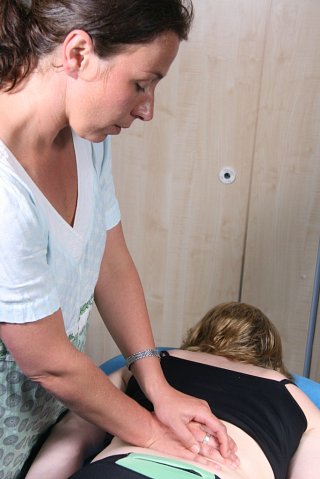Massage For Sciatica

Massage for Sciatica (and related back pain), is one treatment that I never really considered or valued - however, now I do!!
This change in opinion came about as a result of working with a well-qualified massage therapist on a daily basis in my own clinic. The opportunity for close observation has shown me where the real value for massage lies in treating sciatica. Massage is very effective on sciatica if you have access to a highly-trained and experienced massage therapist with the correct massage techniques.
Let me explain to you what I mean by this. There are many types of massage approaches available today. Massage courses range anywhere from two day intensive courses, to two year courses based on anatomy education and techniques. I would not let a massage therapist - who did not have least fifty days training, exams and qualifications - touch me if I had sciatica! Combine this fact with the personality and intention of the therapist - all of these variables will dictate the positive effect any massage treatment may have on your sciatica.
But, my main concern is this: As stated elsewhere, the causes of sciatica are many. If the cause is not addressed, and your tight muscles are massaged, then treatment may worsen in your condition. This may happen in a temporary capacity - or in some cases an ongoing negative effect may result.
If a chartered physiotherapist or doctor has advised you that your sciatica is caused by specific muscle tightness, then an appropriate massage in the related area may relieve you of your sciatica symptoms. However, if your muscle tightness is secondary to another cause of sciatica then massage can often cause more pain.
A common example of this, that I see on a weekly basis, is where a client went for massage therapy for their sciatica symptoms and the result was negative. This was due to the fact that the cause of their sciatica was a prolapsing disc, and the muscle tightness was secondary to this. In this situation, the massage therapist attempted to release the muscle tightness. In doing so, the therapist released the body’s protective mechanism, which is aimed at protecting the damaged disc from further damage. This secondary effect of sciatica is of great importance in the overall protection of your spine from further damage. So, seek a physiotherapist’s opinion prior to embarking on massage for your sciatica symptoms.
So, when is massage good for sciatica?
My answer is as follows - if the cause of your sciatica has been diagnosed as due to tight muscles. Approximately 20% of sciatica patients that I see have sciatica as a result of tight muscles alone. If a qualified therapist has advised you that the cause of your sciatica is muscle tightness, then ask them to recommend a massage therapist who is both effective and qualified in the treatment of your symptoms. As stated earlier, I now work alongside a well trained massage therapist who has a great understanding of her trade. If my client suffers with sciatica, lower back pain or neck pain due to tight muscles - I am happy to I send them to her. I assess my client, identify the muscles involved and then they attend the therapist with a very specific massage in mind. I have found this treatment approach to be very effective.
In summary, my advice to you is to only undergo massage for sciatica under the guidance and recommendation of a chartered physiotherapist or equivalent healthcare professional.
DISCLAIMER
While the content and materials contained in the articles on this website have been written & researched by Sally Ann Quirke, a professional, practising & fully qualified Chartered Physiotherapist (Physical Therapist) based in Ireland, they are provided for general information and educational purposes only. They do not constitute medical advice on any particular individual situation. Please see your Chartered Physiotherapist or other medical practitioner for full and individual consultation.
Please read the full disclaimer here.
Cookies and Privacy
By using this website, you consent to the use of cookies in accordance with our cookie policy. For more information on how we use cookies, please read our cookie policy here.
